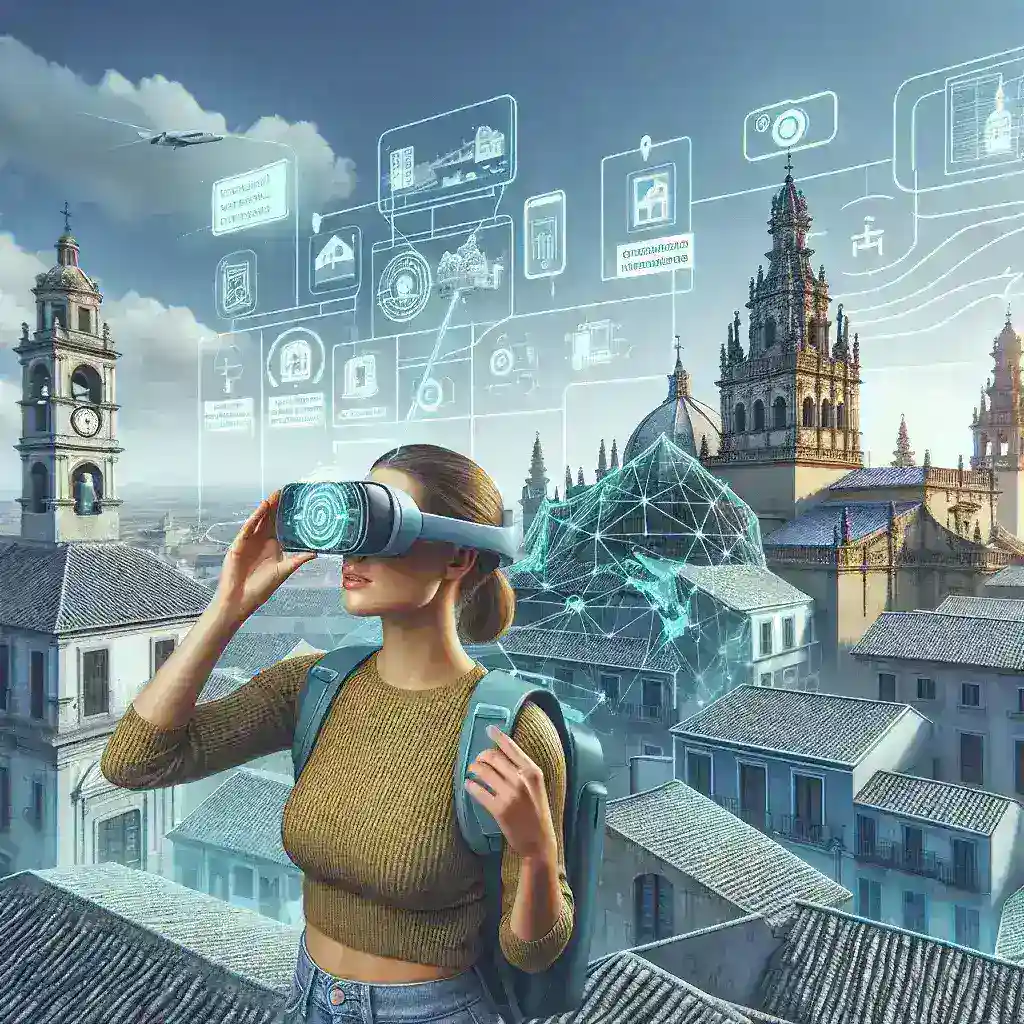Introduction
Augmented Reality (AR) is not just a buzzword; it’s a revolutionary technology reshaping various industries, including travel and tourism. By blending digital information with the real world, AR creates immersive experiences that enhance travelers’ interactions with their destinations. This article delves into how augmented reality is changing travel and tourism, making it more engaging, informative, and accessible.
The Role of Augmented Reality in Travel Planning
Planning a trip can be overwhelming, but AR tools streamline this process, offering virtual previews and interactive guides.
1. Virtual Tours and Previews
- Destination Exploration: AR apps allow users to virtually explore destinations before booking. For instance, users can experience a 360-degree view of landmarks, museums, and hotels.
- Interactive Itineraries: By using AR, travelers can view suggested itineraries that pop up interactive elements like tips, nearby attractions, and user reviews.
2. Enhanced Accommodation Choices
Travelers can utilize AR to visualize hotel rooms and amenities without stepping foot inside. Some platforms allow customers to experience a virtual walkthrough of the property, aiding in the decision-making process.
Augmented Reality on Location
Once travelers reach their destination, AR continues to enhance their experiences through innovative mobile applications and devices.
1. AR Navigation
Getting lost in unfamiliar streets can be a thing of the past, thanks to AR navigation tools that overlay directional arrows and information onto real-world views. Travelers can simply point their smartphones in any direction to receive step-by-step guides to their destinations.
2. Real-time Information and Translation
- Insights at the Fingertips: Travelers can use AR apps to scan landmarks and obtain historical facts, opening up a treasure trove of information that enriches their visits.
- Language Barriers: AR translation features allow users to point their smartphones at signs, menus, and more, receiving real-time translations, making navigation and dining experiences smoother.
3. Interactive Local Experiences
AR enhances the local experience by providing interactive elements. Museums, historic sites, and cultural hotspots are incorporating AR into their exhibits, allowing visitors to point their devices at artifacts to see related animations, videos, or augmented displays.
The Benefits of Augmented Reality in Travel and Tourism
Augmented reality offers several advantages for travelers and the tourism industry alike.
1. Increased Engagement
AR can make experiences more engaging and fun, attracting tech-savvy travelers who appreciate innovative ways to interact with their environment.
2. Improved Accessibility
Accessible information through AR can help travelers with disabilities. For example, AR can provide information on wheelchair access at various attractions, ensuring inclusivity.
3. Enhanced Marketing and Branding
Tourism brands can leverage AR to create memorable marketing campaigns. Virtual reality experiences and gamification can attract potential travelers, encouraging them to take the plunge and book their trips.
Challenges and Considerations
Despite the promising future of AR in travel, certain challenges must be addressed.
1. Technological Barriers
Access to smartphones and reliable internet services is crucial for the success of AR apps. In areas with low connectivity, the potential of AR may be limited.
2. User Experience Design
For AR to be effective, it must be user-friendly. Poorly designed applications can frustrate users, leading to disengagement.
Case Studies of AR in Action
Many companies are embracing augmented reality, providing valuable insights into its applications.
1. Google’s Live View
Google Maps integrated AR navigation with Live View, guiding users with arrow overlays on their screen. This innovation has made finding destinations significantly easier.
2. Airbnb’s AR Features
Airbnb utilized AR to allow potential guests to explore properties virtually, improving the booking experience and enhancing customer satisfaction.
The Future of Augmented Reality in Travel and Tourism
The future of augmented reality in travel and tourism looks promising as technology continues to evolve. As AR devices become more widespread and affordable, we can anticipate more immersive experiences tailored to individual needs.
1. Personalized Experiences
AI combined with AR can create personalized experiences based on travelers’ interests and previous behaviors, offering curated content to enhance their journey.
2. Collaborative Travel Planning
Future AR applications might enable group interactions, allowing friends and family to plan travels together virtually, regardless of their locations.
Conclusion
Augmented reality is undeniably changing the landscape of travel and tourism, providing innovative solutions for enhanced engagement, accessibility, and personalized experiences. While challenges exist, the potential benefits of AR create exciting opportunities for both travelers and the industry as a whole. Embracing this technology can lead to unforgettable travel experiences that go beyond traditional sightseeing.

